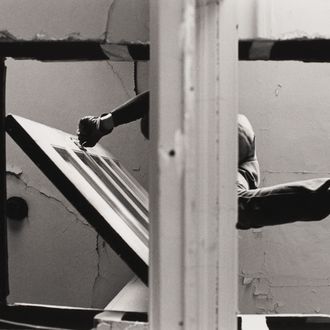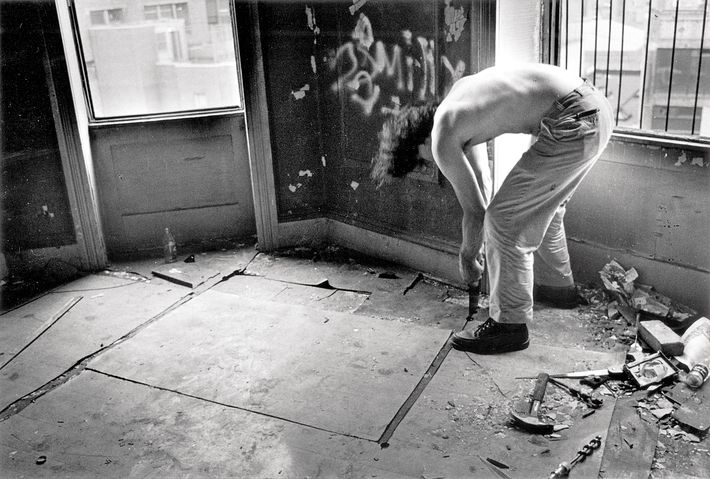
This month, the sprawling exhibition “Gordon Matta-Clark: Anarchitect” takes over the Bronx Museum of the Arts — a fitting survey for an artist who used the city as his material. Pictured here is Matta-Clark creating his work Bronx Floor: Threshole (1972), which he made by putting geometric cuts into the floors of abandoned Bronx buildings. The son of surrealist artist Roberto Matta and a graduate of the Cornell School of Architecture, Matta-Clark took a guerrilla approach to both his work and his environs, perhaps best exemplified by Window Blowout (1976), a series of photos of desolate housing projects included in an exhibit at the Institute for Architecture and Urban Studies in midtown. The night before the exhibit opened, Matta-Clark took an air gun and shot out the building’s windows, infuriating the institute’s founder, architect Peter Eisenman. The next day, Matta-Clark’s photos were removed from the exhibit and he was barred from the gallery. He died in 1978, of cancer, at 35 — and his work is once again drawing attention.

Along with the Bronx Museum show, the artist Anu Vahtra is leading free sunset tours that look at his legacy in Soho as part of the upcoming Performa 17 festival. And last October, downtown’s Community Board 2 unanimously approved the Whitney Museum’s proposal for a public artwork by David Hammons in homage to Matta-Clark’s Day’s End, which Matta-Clark created by cutting openings into an industrial shed on Pier 52. Matta-Clark in many ways anticipated the transformation of the city and preemptively critiqued it. As Jessamyn Fiore — a co-curator of “Anarchitect” and the daughter of Matta-Clark’s widow — says, his work exhorts people to “fully live in the place surrounding them without temerity or fear of authority.”

Gordon Matta-Clark: Anarchitect will open at the Bronx Museum of the Arts on November 8.
*This article appears in the October 30, 2017, issue of New York Magazine.

